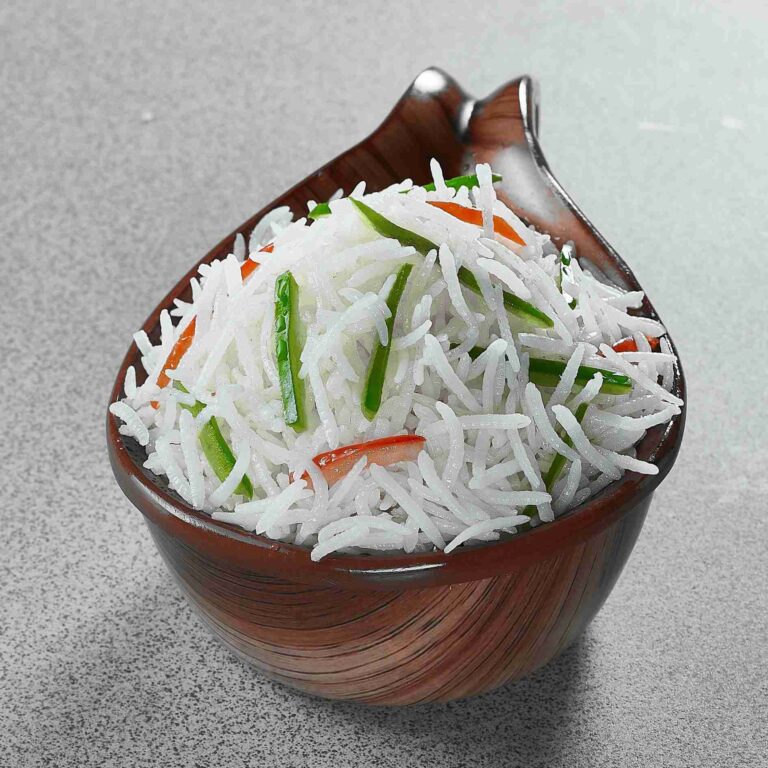Why is Basmati Rice Expensive?
In regards to the best rice varieties, the reputation and demand for basmati rice are unparalleled. Popular for its unique aroma, large grains, and stunning taste, basmati rice is enjoyed as a staple in several households all around the world. Though its appeal as a premium grain usually leads to a concern and raises the question: why is basmati rice so expensive? In this blog, we will discuss the reasons that lead to the higher cost of this precious grain.

Historical Significance and Geographical Indication
Here are some of the prominent varieties of Rice:
To comprehend the exact value of basmati rice, it’s essential to know its historical importance and distinctive geographical features. Majorly the grain has its roots in the Indian subcontinent, particularly the Himalayan foothills. Most importantly, basmati rice has been on the scene for decades. The elements, like certain environmental conditions like climate, soil, and water, lead to unique aroma and slender grains that set basmati apart from other varieties.
Moreover, basmati rice has earned Geographical Indication (GI) status, which considers its source a vital factor in the quality of its production. The GI tag ensures that only the rice cultivated in certain areas, following the rigorous standards, can bear the ‘basmati’ label. Such exclusiveness inserts a layer to the purity of the grain. However, it can also raise the price because of the limited production spaces and strict compliance with quality measures.
Reasons Behind Why Is Basmati Rice So Expensive
- Size
Basmati rice is popular for its size and labeled as one of the best rice varieties by most cooks and consumers. Its demand is on the rise because of its long, slender, and non-sticky grains compared to regular rice varieties that are short and tend to stick to each other when cooked.
- Aging
Most people know that farmers who sell their freshly harvested basmati rice earn much lower prices than those who age their rice first. It is so because natural aging improves and boosts the flavor, aroma, and cooking attributes of the grain. However, the whole procedure of aging is not only costly but extremely time-consuming as well.
For example, farmers or companies must invest in advanced equipment and certain warehouses to age the grain to protect it from insect or rodent infestation and moisture damage. As a result, the aging process increases the prices of basmati rice.
- Importing
About two-thirds of the world’s basmati rice is cultivated in India, yet it is consumed all over the globe. This indicates that most of the world’s population is buying rice transported from India. They have to pay for the heavy importing expenses like shipping charges, taxes, and customs duties. Thus, if you buy basmati rice in Western countries, the prices will be a lot higher compared to when buying it in India or other Asian countries.
- Cooking Results
Some companies cash in on basmati’s certain and unique attributes, boosting its demand. The grains become slender, delicate, and deeply aromatic when basmati rice is cooked. The aroma results from a compound called 2-acetyl-1-pyrroline, which is present in basmati rice.
Most consumers love these attributes of basmati and are ready to pay a higher price. Furthermore, it grows twice the size when cooked, making grains more filling and thus desirable.
- Nutritional Level
Compared to affordable rice varieties, basmati rice tends to be a healthier option, resulting in a more costly price. For example, basmati rice is known for having a low glycemic index, making it a promising option for diabetic individuals.
Apart from this, it has a low-calorie count compared to other rice varieties. It also contains a reasonably high percentage of complex carbs, which act as an excellent energy source. Moreover, this rice has low cholesterol, fat content and is gluten-free. Thus, all these high nutritional levels spike its price greatly.
Agricultural Practices and Harvesting Methods
In today’s era, harvesting basmati rice needs complex practices in the field and harvesting techniques, directly contributing to the cost it can reach. Compared to other types of rice, basmati demands diligent cultivation in certain agroclimate zones. Moreover, farmers should use traditional methods, like organic fertilizers and natural pest control, to preserve the authenticity of the rice and its unique attributes.
Growing basmati rice can be time-consuming and takes typically multiple months. The rice is planted in the spring months and harvested in the autumn months. It allows the grains to grow slowly and earn the desired taste and texture. Furthermore, the cultivation procedure generally needs manual labor since traditional techniques are employed to guarantee the authenticity of the rice. The dependency on experienced and skilled workers can increase production costs.
Global Demand and Limited Supply
The global appeal of basmati rice plays an essential role in its price. Its unique aroma, flavor, and texture have boosted worldwide demand, making basmati a sought-after option for top-class chefs, customers, and food lovers. Though the tiny geographical areas where basmati rice can be cultivated authentically result in limited availability.
At times, demand surpasses supply, and the effects of demand and supply will naturally increase prices. Moreover, the rigorous GI rules and quality-control measures restrict the collection of authentic basmati rice available to export. So, a mixture of highly demanded rice and low supply leads to a situation that allows basmati rice to maintain its pristine status as a premium commodity in the global market.
Conclusion
Eventually, the high cost of basmati rice could be accredited to a mix of aspects, all playing a vital part in its production, cultivation, and market position. From its earliest roots with the lush green fields of the Himalayas to the strict quality control processes, the limited geographical indication, and the global demand, basmati rice is rightfully considered a premium grade of grain. Even though the cost may seem high, it exhibits the dedication to purity, top quality, and sustainable products, which are the critical factors of this unique rice variety.
So, next time you eat and enjoy basmati rice, think about the long journey to reach your table to deliver a stunning aroma and taste.



